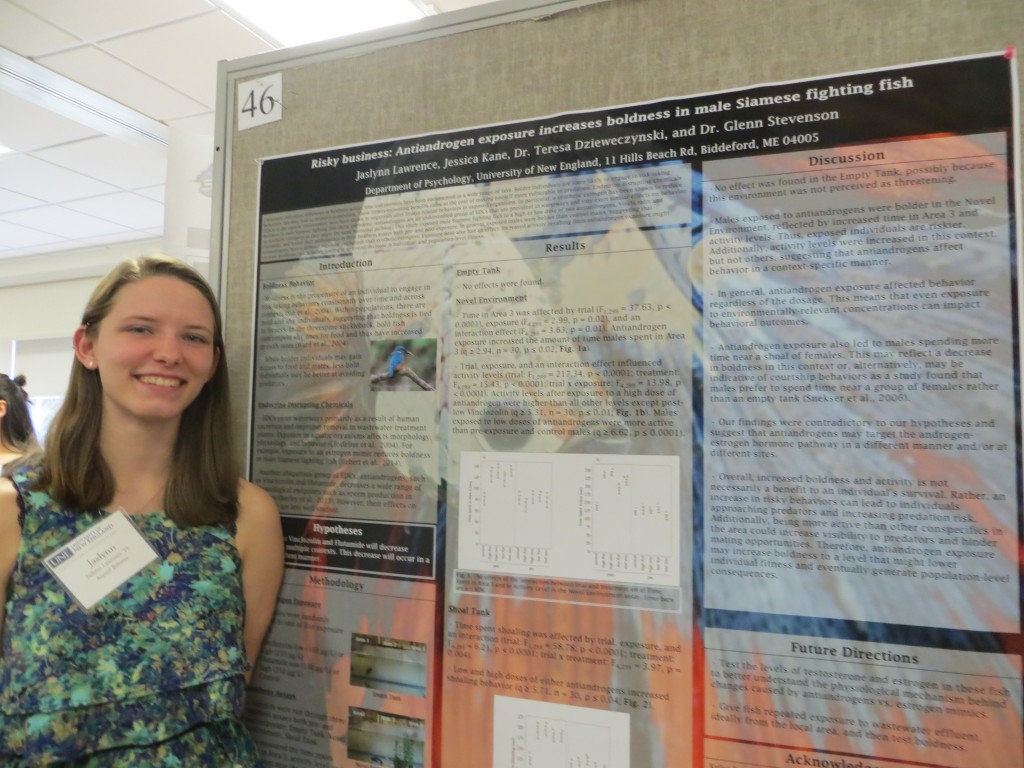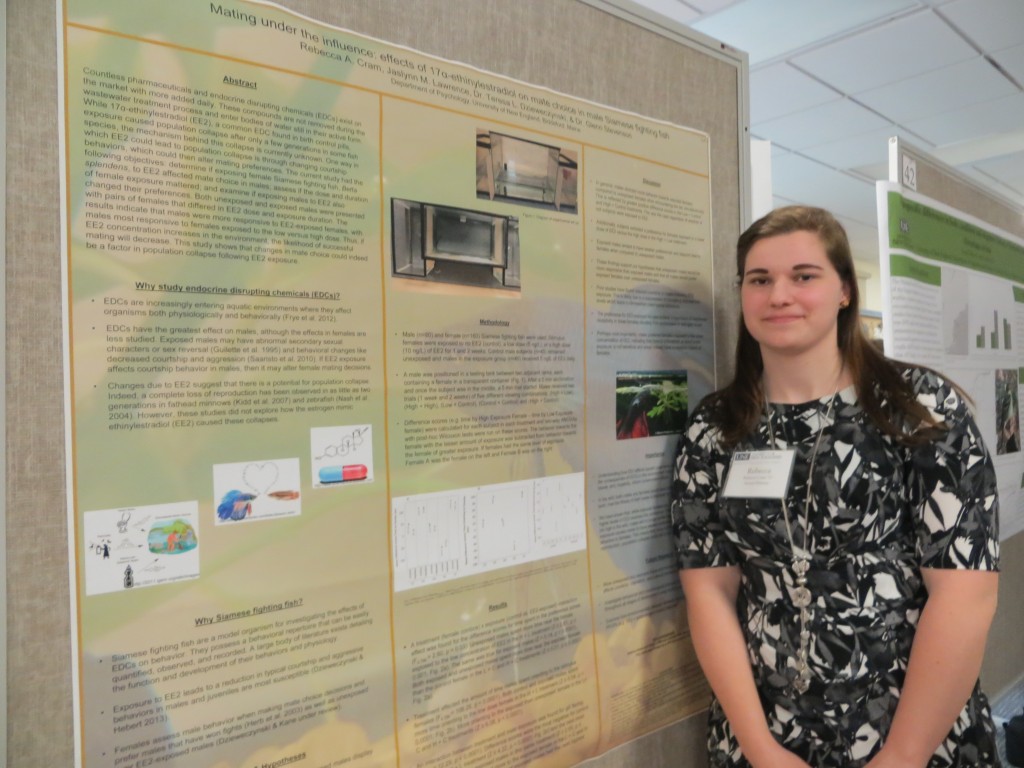Study conducted by Teresa Dzieweczynski and student co-authors examines mating by fish exposed to chemicals

A study conducted by Teresa Dzieweczynski, Ph.D., associate professor in the Department of Psychology, and student co-authors Rebecca Cram, B.S. ’17 (Animal Behavior) and Jaslynn Lawrence (Animal Behavior, ’19), was recently published in Ecotoxicology, a peer-reviewed scientific journal.
The study, titled “Mating under the influence: male Siamese fighting fish prefer EE2-exposed females,” sought to determine if exposing female Siamese fighting fish to the synthetic estrogen 17α-ethinylestradiol (EE2) changes mate choice in males, to assess if the dose and duration of female exposure matters, and to examine if exposing males to EE2 influences their mating preferences.
EE2 is a common endocrine disrupting chemical found in birth control pills. It has led to population collapse in some fish species after only a few generations.
Many of these compounds are not removed during the wastewater treatment process and enter bodies of water in their active forms.
The results of the study indicate that males were more responsive to EE2-exposed females than unexposed females, with males being most responsive to females exposed to low versus high doses.
If EE2 concentration increases in the environment, the likelihood of successful mating could decrease and potentially lead to adverse population impacts.

